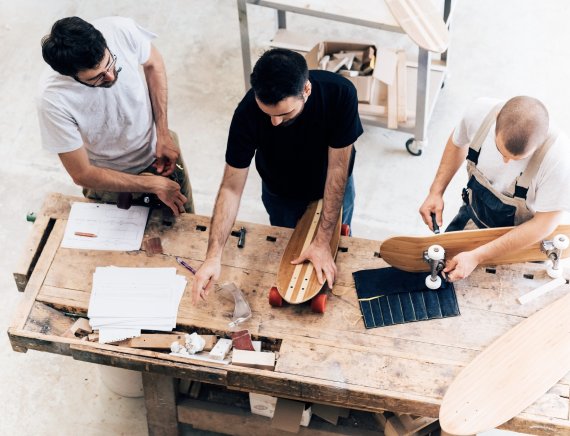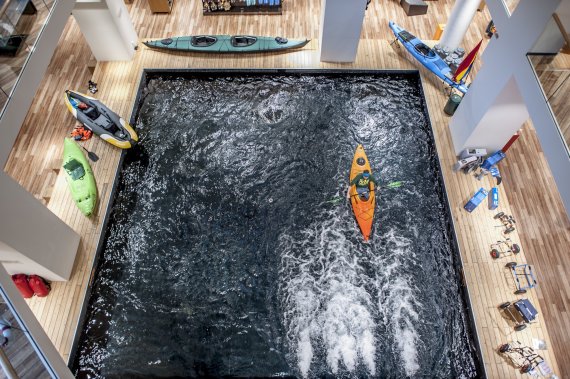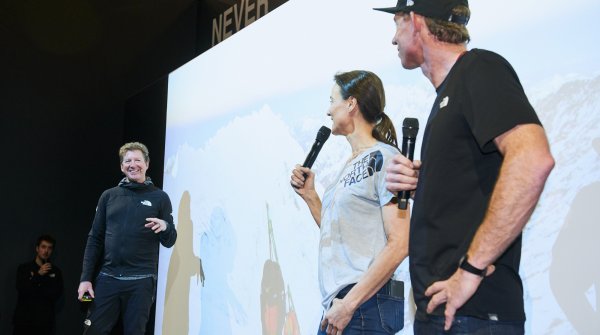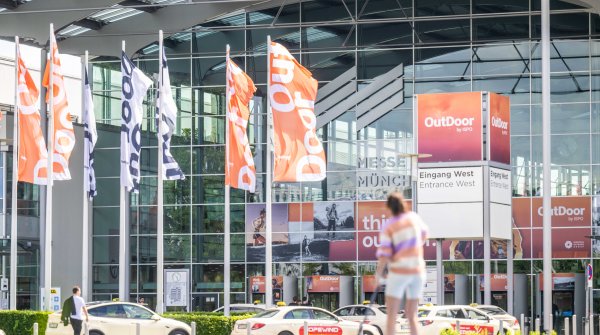
Uniqueness is the commodity that sells best in stores. The equation is simple. The customer needs an incentive to visit a sales floor. The physical product experience is just a foundation. What it needs is that “one more thing.” Something the customer won’t get anywhere else.
The solution: The sales space is increasingly becoming a stage for major productions that immerse customers into a brand environment and promise real experiences. The transformation has begun. From the point of sale to the point of stage. Even the famous multi-channel retailer Globetrotter is calling its stores ‘experience branches’ for a reason.
“The product alone still doesn’t generate an outdoor experience. In addition to good consultation, in retail it’s especially important that the environment comes to meet the customer, that it understands them and fuels their anticipation for the outdoors before they’ve even left the store. The outdoor experience already begins indoors,” confirms Jens Holst (branch manager of Globetrotter Munich).

It’s like a ritual. When people order a coffee at Starbucks, they’re asked for their name. Why is that actually the case? In other cafés the drinks ultimately find their owners, even without names. In fact, Starbucks identified a concept a long time ago that draws people into their coffee shops: a shared moment. The ritual of giving one’s name creates a personal brand experience and closeness to the company. That makes the customer want to come back. The coffee chain has thus established one of the simplest and most effective experience concepts out there.
Frequency drops at stores have also allowed for new customer retention concepts to emerge in the outdoor industry. ‘In-store experience’ is the magic word that promises retail both incentives and customers. Due to its identity-establishing character, the outdoor industry especially has major potential to bring this approach to life.
Next to Globetrotter, it’s also worth shooting a look over to outdoor online giant evo, which is opening more and more physical retail locations. This plan of action is giving its brand image a lively atmosphere. In order to offer the hot brands from the board and bike sectors a fitting projection surface, evo is weaving the product experiences into an overall experience made up of a scene bar, a workshop, and a gallery. The trend-conscious target group is thanking the brand and turning its sales rooms into regular community meeting spots.
It takes courage and authenticity for a concept like this to work. Insincere experiences are quickly identified as purely a sales promotion and lose their effectiveness in the long-term. “People who want to experience outdoor want real experiences. It doesn’t matter what it’s about, it just can’t seem too artificial,” emphasizes Jens Holst (branch manager of Globetrotter Munich).
Only when retailers come to grips with the image and personality of a brand, in addition to its products, can they establish a consistent, recreational atmosphere where brands can achieve their full effect. This requires formats that give retailers precisely these avenues.
For the point of stage to lift its curtain, it naturally needs a place where the international outdoor industry can consolidate and open itself to other industries. This requires a space that promotes new ideas and breaks down barriers – both physical and psychological.
Together, this can result in a distinct image of what constitutes outdoor at its core. A shared vision, an image of the future. Only when this joint goal is clearly described can every retailer figure out their own path towards the destination. With the brands they discover, support, and represent.
In addition to product innovations and more efficient match-making, the brand values of the manufacturers above all need to come alive. In doing so, the special features need to be the focus. What makes up a brand at its core? What makes it unique? For which target group is it absolutely essential? Who are its icons, its heroes? Only once the retailer has experienced these properties for itself can it curate a world of experiences that will draw customers to stationary retail.
That unique combination of select brand identities thus becomes that “one more thing” needed to make a purchase into a unique experience.

 OutDoor by ISPOOutDoor in transition
OutDoor by ISPOOutDoor in transition
- ISPO awards
- Mountain sports
- Bike
- Design
- Retail
- Fitness
- Health
- ISPO Job Market
- ISPO Munich
- ISPO Shanghai
- Running
- Brands
- Sustainability
- Olympia
- OutDoor
- Promotion
- Sports Business
- ISPO Textrends
- Triathlon
- Water sports
- Winter sports
- eSports
- SportsTech
- OutDoor by ISPO
- Heroes
- Transformation
- Sport Fashion
- Urban Culture
- Challenges of a CEO
- Trade fairs
- Sports
- Find the Balance
- Product reviews
- Newsletter Exclusive Area
- Magazine



